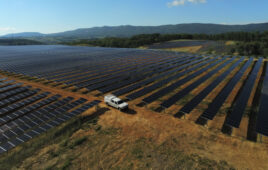This installation tip was provided by Milton Nogueira Sr., business development manager, Roof Tech
Never underestimate the importance of understanding a product by reading its installation instructions. Not only is it a code to go by, but if anything goes wrong, an installer who hasn’t followed the instructions is liable and will be at fault.

When using drivers for fixing solar hardware, avoid high-speed and high-impact drivers. Most of the new bonding designs include a bonding pin, normally top-down clamping. Setting the nuts and bolts with a high-speed and high-impact driver can damage the PV frame and over-torque the set. That can cause the stainless-steel hardware to seize, making it very difficult, expensive and time-consuming to replace.
At Roof Tech, we are seeing an increase of direct-to-deck installations. On a 2×4 rafter, the 5/16-in. lag must reach the center-middle-third of the plank. That is a challenge, because if the lag is fastened outside that area, it can result in no structural value for the array and possibly also damage the rafter by splitting it, compromising the integrity of the roof structure. When using engineered hardware for direct decking installs, make sure the testing has been done according to a standard and at an accredited facility.
If you have to address modules on the middle of the array, please don’t walk on them. Know that heavy point loads can seriously damage the PV cells. Make a plywood platform so you can distribute the load evenly.




Tell Us What You Think!